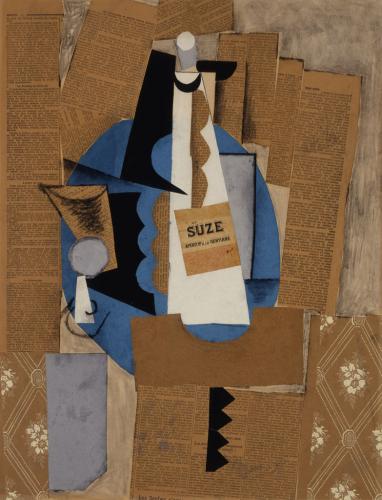
It is time for everyone’s fave: Picasso (and Georges Braque. No one talks about that guy) They come up with: Synthetic Cubism. Smooth and rough surfaces are contrasted with one another; and frequently non-painted objects such as newspapers or tobacco wrappers, are pasted on the canvas in combination with painted areas. So, because they were famous men everyone just disregarded the hundreds of years of women collaging and decided that they invented it. Ugh. I hate the Patriarchy.


If you only know one historical collage artist, it should be Hannah Höch. She was known for her political collages and was a pioneer of photomontages. She was a part of the Berlin Dada group, which was mostly all about roasting German culture and society after World War I. Even though critics were into her work, she was not about her male peers patronizing her. She reflected, “Most of our male colleagues continued for a long while to look upon us as charming and gifted amateurs, denying us implicitly any real professional status.”

Okay, basically the government took over the film industry. Filmmakers studied existing film and the state created the first film school. What studies found was that 2 images juxtaposed together could create a whole other meaning. In the mid-1920s Stepanova actively evolved as a designer. She was out here co-founding the Constructivist Group. You know those aggressive red and black Russian posters? Yeah, that’s Soviet Constructivism. She began working with various magazines in that capacity and produced a number of photomontages and collages that are of particular interest.
Share This Page